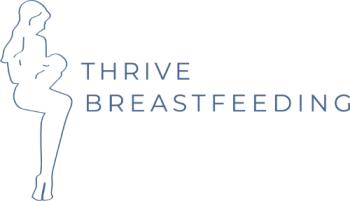How To Easily Make Breast Pumping Less Frustrating
Breast pumping experiences differ significantly from one woman to the next. Some women may pump multiple times a day to supply milk for a baby who has not yet learned the nursing technique. Some may only pump when they need to leave their infant and a bottle of pumped breast milk with a caregiver. Others may never require the use of a breast pump. Many women express their milk because they need to return to work or school while their child is still breastfeeding.
Whatever the situation, most nursing moms have one thing in common: they don’t enjoy pumping.
Here are some pointers that may not make pumping joyful but will make it easier and less frustrating.
Prepare yourself.
Ensure you get an excellent pump that suits your specific demands well. Purchase a new hospital-grade breast pump or rent one suited to your needs. Although borrowing a pump from a friend or family may seem like an excellent way to save money, there are several reasons breast pumps should not be shared, including the danger of bacterial contamination and decreased motor function over a prolonged period. (the vast majority of breast pump motors are designed to last around a year of daily usage, so if this is your second or third kid, you’ll probably need to rent or buy a new pump.)
Remember that knowing how to express your milk manually is also a smart idea. For some moms, this method of milk evacuation is more efficient than pumping. Even though you prefer to pump the breast, hand expression may be required if there is a power outage or if you lose a critical pump item while traveling, such as the tubing or flange.
Prepare ahead of time.
If you know you’ll need a milk stock for your infant (typically owing to a return to work or school), start saving it several weeks ahead. Then, choose a time to pump between your baby’s regular feedings.
There is no need to wait for a certain time after feeding to pump because your breasts produce milk 24 hours a day, seven days a week. When your breasts are “full,” milk production slows; when they are “less full,” milk production increases. So feed your child on demand and pump in between.
You should not be concerned about running out of milk for your baby’s next meal. Your body will replenish the milk you have removed. Your baby may consume less milk during his next meal and will be hungry for the following feeding sooner than expected. You’re likely to make more milk the next day to fulfill your baby’s and the pump’s demands.
While nursing, pump.
Your baby is the perfect let-down trigger; after all, they are the natural “demand” for your milk “supply.”
Some moms discover that pumping a specific breast while the baby breastfeeds on the other produces the most milk. It makes sense: breastfeeding the infant encourages the body to create hormones that cause milk to be released.
If your baby exclusively feeds from one breast, he may be hungry for his next meal sooner than usual. But there’s no need to wait; feed him now. Your body will adjust in a day or two, and you will make a bit extra milk to suit your baby’s demands and the pump. Meanwhile, continue to respond to your baby’s hunger signs.
Breastfeed often!
To maintain a healthy milk supply, working mothers-or any mothers-should breastfeed as much as possible while you and your infant are together. Breastfeeding should be your final step before you split ways whenever feasible. Make it the first thing you do when you get together.
If your milk production dwindles throughout the workweek, consider dedicating the weekend to your baby. Put your feet up, have a nice book or the TV remote handy, get skin-to-skin with your baby, and offer your infant a feeding whenever they show signs of hunger.
If expressing your milk apart from your infant feels difficult or distressing, consider encouraging “reverse cycle feeding.” Reverse cycle feeding focuses on the baby’s nutritional requirements over a 24-hour period. Allowing the infant to eat as much as possible in the evening and into the night is what reverse cycle feeding entails. The infant typically gets fewer feedings during the day with a caretaker. When the infant is ready to start solids, the caregiver can concentrate on those meals and sometimes skip milk feedings entirely. When you are together, your baby will likely obtain all the milk he requires in the early mornings, evenings, and nights. If you can postpone your return to work until your kid is six months old and starts complementary foods, he may never need to use a bottle, and you may never need to pump.
Because reverse cycle feeding might leave some women sleep-deprived, it may not be the best long-term strategy. However, for women who are comfortable co-sleeping, for a baby who does not want to take a bottle, or for a limited time (such as the few months between returning to work and your baby starting solids), this might be a suitable method for parents who wish to avoid pumping.
These tips are designed to simplify life and remove the frustration and hassle of breast pumping. Using these tips, you will find that you have more time to enjoy those special times with your newborn and less worry about breast milk.
